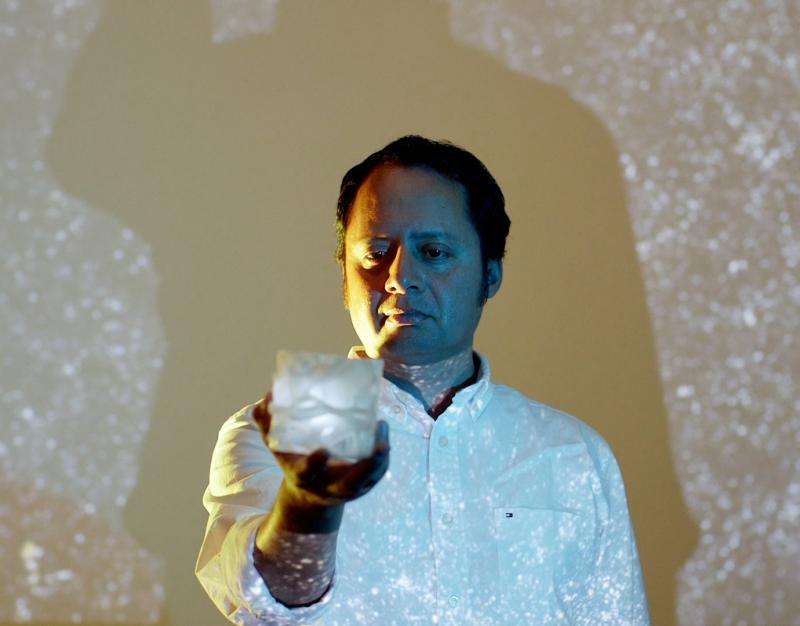Physicist uses 3D-printing technology to understand how the universe has evolved

3D-printing technology has been used to create everything from iPad stands to guitars to lawnmowers and cars. Now a physicist at the University of California, Riverside is using the technology to understand the universe – its structure, the evolution of cosmic structures within it, and galaxy formation.
"These problems in cosmology are very difficult to visualize, even using computer graphics," said Miguel Aragón-Calvo, a visiting assistant researcher in the Department of Physics and Astronomy. "By 3D-printing them I am able to interact directly with the models and 'see' the problem at once. In some cases this results in 'eureka' moments."
Recently, Aragón-Calvo was trying to develop an automated method to identify and track the cosmic web across time in computer simulations.
"This is usually done by identifying structures at different times and then somehow linking structures in adjacent times," he said. "Current techniques using this approach are far from optimal."
By 3D-printing a simpler 2D simulation and assigning the third dimension to time he realized that this was in fact the solution to his problem.
"Tridimensional cosmic structures can be easily identified and tracked as four-dimensional objects where time is taken as another spatial variable," he said. "Even though I had visualized the cosmic web many times before in the computer screen, the solution only became obvious once I held the model in my hand."
Aragón-Calvo came to UC Riverside in 2013. Before that he was an assistant research scientist at Johns Hopkins University, Md., which is where he also completed his postdoctoral research. He received his doctoral degree from the University of Groningen, Netherlands. His areas of interest include cosmic web analysis, galaxy formation, and data mining/visualization.
"I often 'play' with 3D models of galaxies in their early stages in order to get new ideas on how gas gets injected into them to produce stars," Aragón-Calvo said. "This has been very helpful in developing a model of galaxy formation that I will soon submit to a peer-reviewed journal."
Aragón-Calvo believes that tactile information gained when holding a model of a problem in the hand plays an important role in how we understand the problem.
"Babies learn by observing and touching, even placing objects in their mouth in order to gain more information," he said. "By touching a 3D-printed model, by turning it over in your hands, we can often acquire the kind of information that our visual sense alone cannot provide."
Provided by University of California - Riverside





















